Smart tech can save your garden from a summer heatwave – here's how
How to use smart gadgets to look after your garden when it's hot, hot, hot!
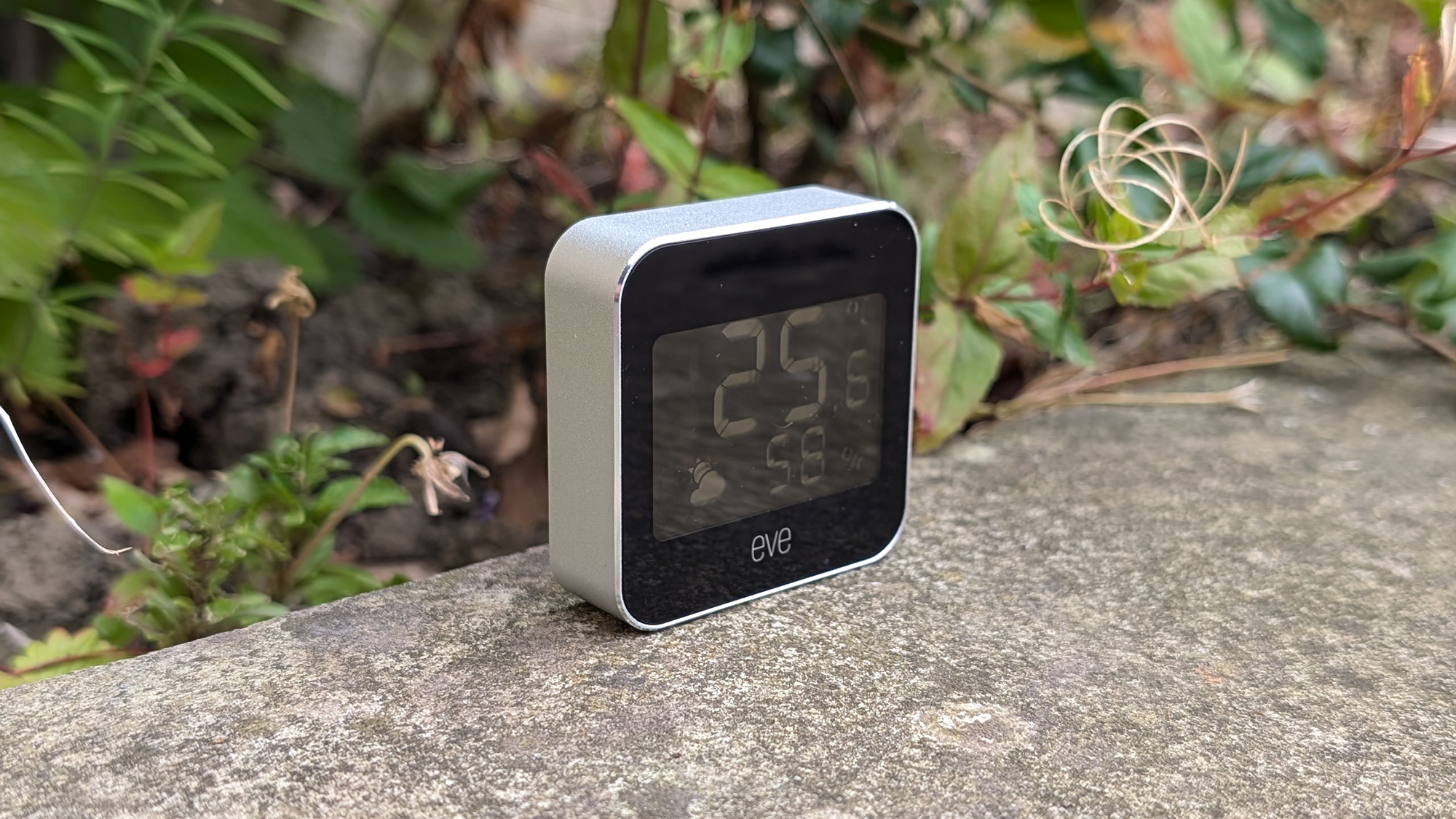

Plants love sunlight, and plants love water. But disaster strikes when there’s too much of one – and not enough of the other. It’s a particular problem in the summer, but with climate change making our summers warmer, the keen gardener will need to start taking additional precautions to prevent fried foliage and parched perennials.
The scale of the problem is stark: according to the Met Office, the UK faces the prospect of month-long heatwaves and an increased likelihood of temperatures exceeding 40°C. And the government says that without the expensive and locally-destructive creation of new reservoirs, the UK could face severe water shortages.
That means gardeners will – now or in the future – need to use less water, but use it more effectively to keep those lawns lush. One easy and convenient solution is to turn to the wide variety of smart irrigation systems, soil monitors and weather stations available which can ensure just the right amount of water is used, regardless of whether you’re home or away.
Why heatwaves represent a serious problem for gardens – and gardeners
As the mercury rises and rainfall levels drop, there’s an increased risk of heat stress in plants, which can result in slow growth or plant death. Of course, some plants are more at risk than others, so if you’re growing hydrangea, acer, fuchsia or roses, you’ll need to take particular care.
Increased soil evaporation leads to thirsty, stressed plants; too much peak sun can cause wilting, sun-scorching and plant death. It’s a problem that’s exacerbated during the summer, when you’re more likely to be away on your holidays.
There are some fundamentals which can help. Choosing more resilient plants can help, although these are typically species with smaller flowers. Watering the night before a heatwave hits – and again early that morning – will give water the best chance of penetrating the root zone. Try to avoid watering during peak sunlight and heat because more water will evaporate, but if it’s unavoidable, try to avoid the foliage as that can cause leaf burn.
Creating temporary shades – even by using a beach umbrella – can provide respite for more susceptible plants, and don’t neglect shade plants, either. While they might be out of direct sunlight, they may have a tougher time adapting to hotter and drier conditions. Adding a layer or mulch can help the roots stay cooler and can help ensure the soil retains more moisture.
Get all the latest news, reviews, deals and buying guides on gorgeous tech, home and active products from the T3 experts
Pots can be a good idea, because they can be moved around, especially if you’ve put them on a wheeled dolly. But even here there are nuances: terracotta pots can lose a lot of moisture and black pots absorb more heat than lighter ones.
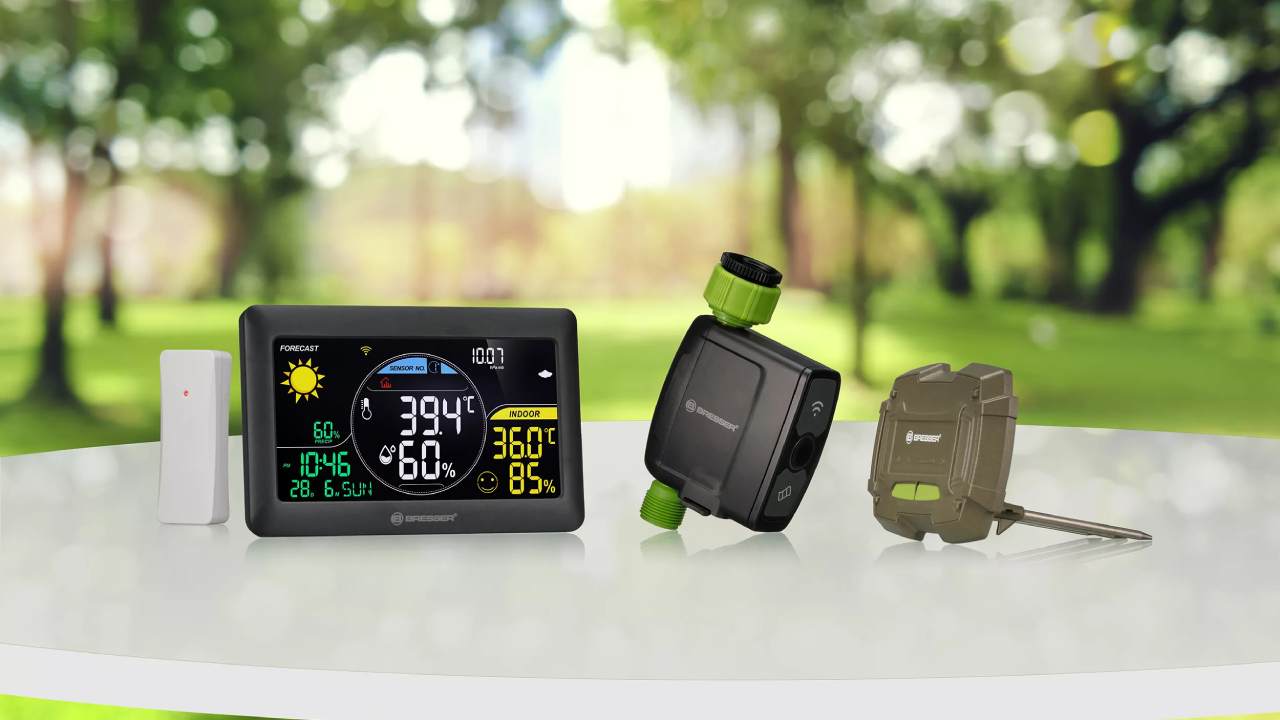
Smart watering systems take the aggravation out of irrigation
For smart gardeners seeking smart tech, irrigation systems are likely to be your first port of call because they can be a fit and forget system to ensure your plants get the right amount of water at the right time.
The primary setup you’d be looking at is a drip irrigation system, such as Gardena’s Micro Drop system, combined with a smart timer. A drip irrigation system is effectively a long hose that you run around your beds, pots, hanging baskets and anything else that needs watering. You install drippers along the length which ensure water is dispensed precisely where you want it. As a bonus, it’s efficient, with some brands citing a 70% reduction in water usage over sprinklers or even watering cans.
Adjustable drippers vary the water flow and also the range the water can spray, and pressure compensating drippers ensure consistent delivery in larger hose runs or where there’s variation in pressure – if you have a steep garden, for example.
The smart element comes from the timing system. There’s a huge range on the market, ranging from simple timers to app-controlled masterpieces.
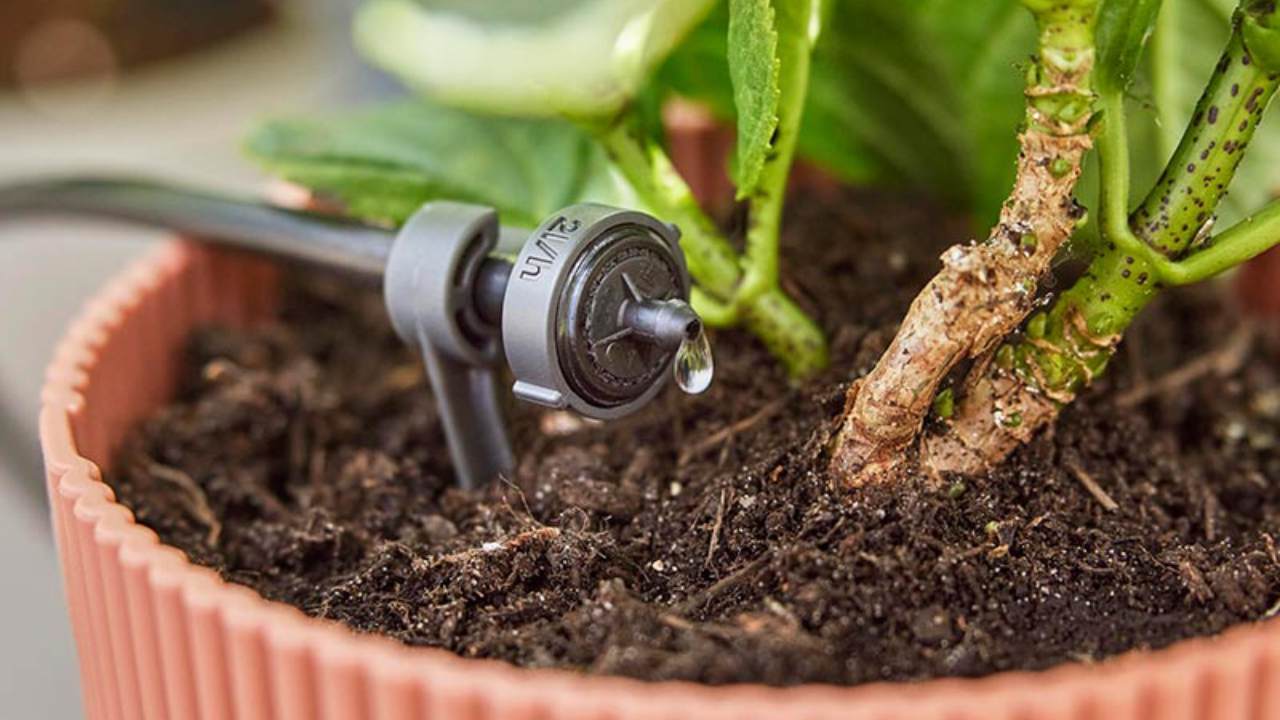
The HydroSure Smart Bluetooth Garden Watering Timer is as simple and cheap as smart systems get. While it’s limited by Bluetooth connectivity rather than Wi-Fi, so you’ll need to be no more than ten metres from it, it’s simple to use, straightforward to set up and allows you to operate a range of sprinklers and irrigators. There’s a timer, manual feature and a rain delay making it ideal for those on a tight budget.
For those seeking a little more flexibility and control away from home, the RainPoint Smart Garden Watering System is a solid entry point. It offers the same fundamental abilities as the HydroSure, but is app-controlled (via a bridge included in the kit), so you can operate it from anywhere with a data connection. Helpfully, the app can recommend schedules based on local weather information
If you have a larger garden, or need to vary the amount of water to various parts – delicate beds and a lawn, for example – a system with two outlets such as RainPoint 2-Zone WiFi Water Timer can help.
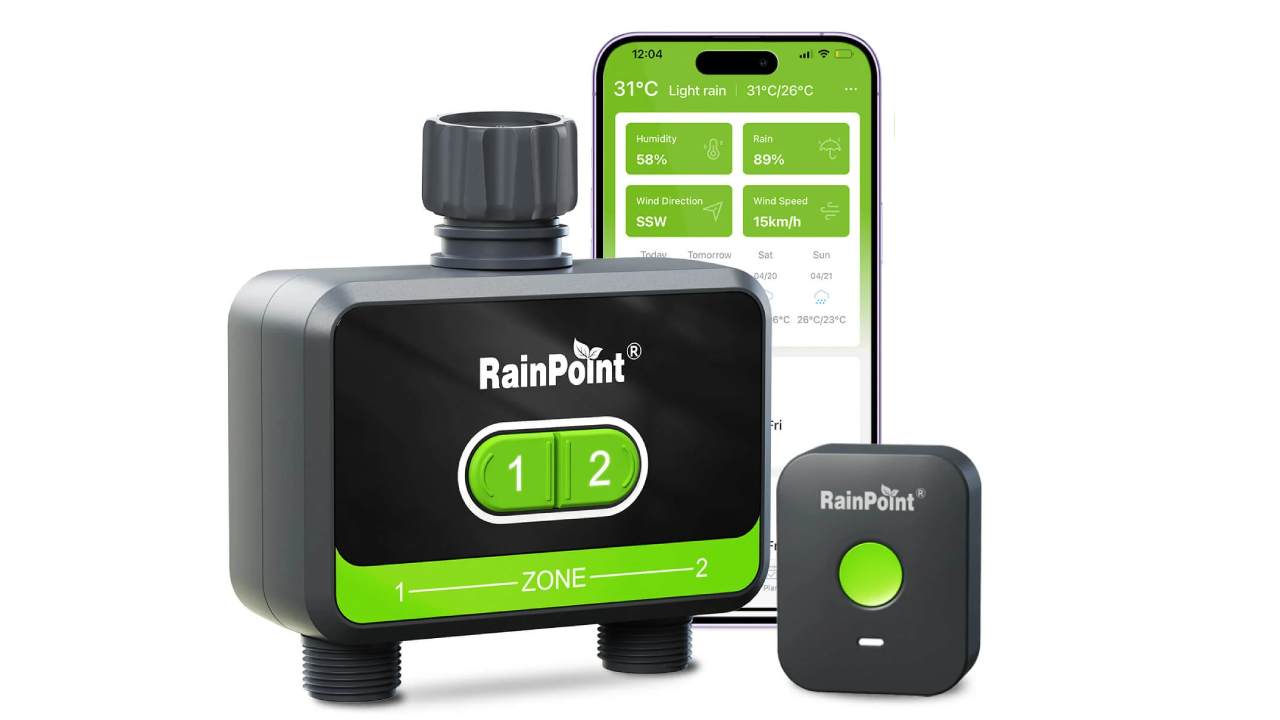
Monitor your soil moisture the smart way
Smart timers and irrigation systems do the donkey work, but soil moisture sensors can track hydration in real time, meaning your plants get watered only when they need it. You’re basing your schedules on hard facts rather than guesswork, meaning you’ll save water – and your plants will thank you for it.
Soil moisture is the best way to tell how much water your plants need, because the correct amount of water held in the soil is essential for plants and vegetation to grow. Because overwatering is as problematic as underwatering, the ability to track soil hydration in real time is essential – which is where smart soil moisture sensors step in.
Broadly speaking, the smart soil monitor you choose will largely be governed by which brand you’ve selected for your smart irrigation system. For the most part, they act in the same way, precisely measuring the moisture levels in the soil. Because they measure locally, you may need multiple monitors, especially if you have particularly exposed or damp areas.
RainPoint’s Smart Soil Moisture Meter delivers its findings back to the RainPoint app allowing you to make an informed decision on when to water, and by how much using its smart irrigation system. On the other hand, the Gardena Smart Sensor Control Set ensures it will only water the garden if moisture levels fall below a certain threshold.
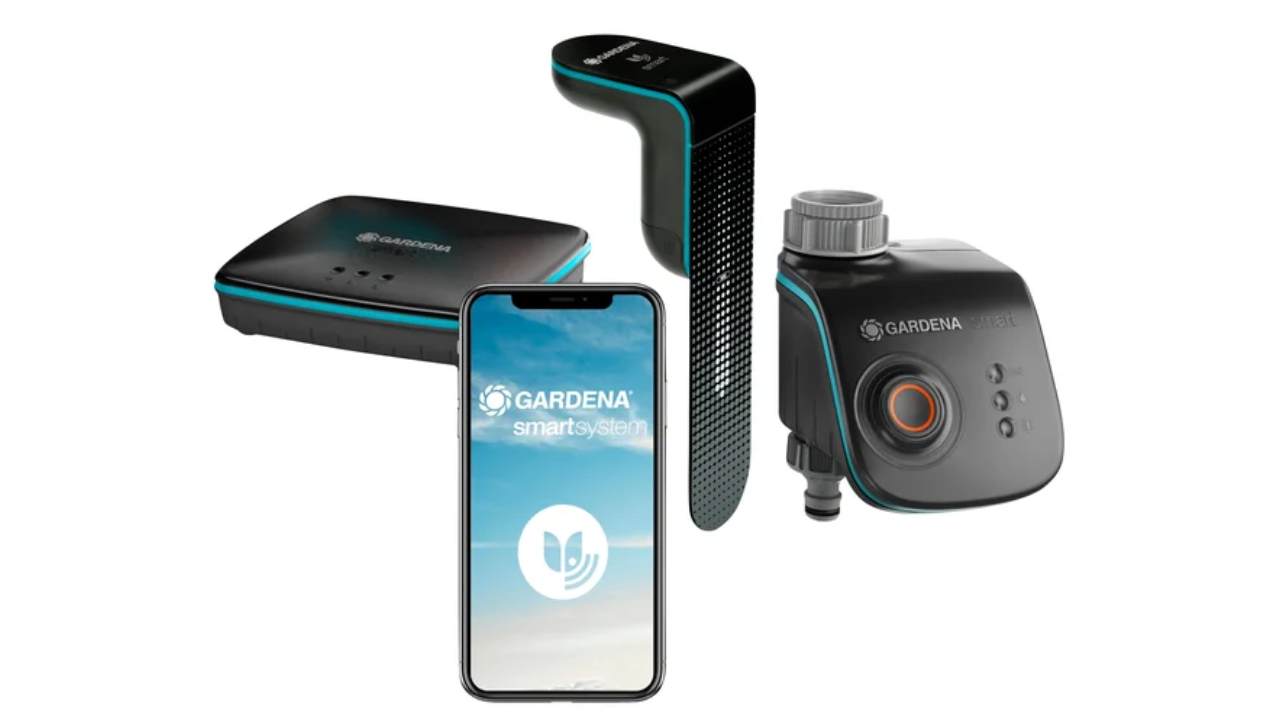
Why smart weather stations are your early heatwave warning systems
Weather forecasts are getting ever more accurate, both nationally and regionally, and the myriad weather websites means you don’t need to tune in to the radio or TV at regular intervals. However, a weather station in your garden can provide a hyper-local forecast helping you to make the right decision for your patch – not just based on general information for your town, city or county.
That’s important, because the amount of tree or hedge cover you have or your proximity to rivers or streams can make a huge difference to the conditions in your garden. And based on this information, you can tailor your watering routines or prepare your shade protection accordingly.
If you’re starting from scratch, then consider the Bresser Smart Garden Smart Home Irrigation System because the kit bundles an impressively specced weather station, timer and soil moisture sensor and uses Alexa or Google Assistant voice activation to start and stop water flow. The weather station itself features temperature and outdoor humidity and a frost alarm.
The Acurite Iris is an entry-level weather station which includes all the features of the Bresser, with the addition of a wind-speed indicator. It doesn't integrate directly with a smart irrigation system, but for the price will be able to give you an excellent view of future trends.
Bridging the gap is the Ambient Weather WS-2902 Osprey, which although it doesn’t directly integrate with smart irrigation systems, uses IFTTT to trigger a range of smart home functions via Amazon Alexa or Google Assistant. The Osprey itself has a wide range of functions and the main unit and screen connect to the internet via a mix of RF and Wi-Fi, which increases the distance at which they can all communicate. Data can be interpreted through AmbientWeather.net, so you can create dashboards, reports or set up weather alerts via email or SMS.
Stuart is a highly experienced journalist with a track record at some of the UK’s most prestigious automotive titles, including What Car?, Autocar and Auto Trader. On the way, he’s reviewed pretty much every important car on the road – and is equally adept at understanding a wide range of related products, from cool boxes to digital multimeters. When not behind the wheel, Stuart has a huge interest in home improvement, and loves nothing more than spending the weekend on the tools. His latest project is fettling a workshop to house his growing passion for woodworking.
You must confirm your public display name before commenting
Please logout and then login again, you will then be prompted to enter your display name.
